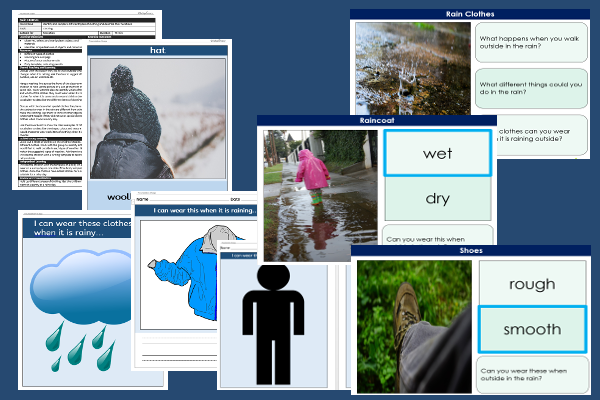Lesson One – Rain Clothes

This curriculum topic teaching pack for the Foundation Stage gets the children to identify, describe and compare some of the different types of clothing that can be worn for a range of functions, experiences and events.
The class can sort and group special items of clothing to show which of the different clothes might keep them dry when walking or playing outside in the rain.
Download this teaching pack including a lesson plan, classroom activities and an interactive presentation to identify, describe and compare some of the different types of clothing that can be worn for a range of functions, experiences and events
Activities in this teaching pack include display posters to identify vocabulary that can be used to describe different types of clothing, a set of cards to sort between items of clothing suitable for different types of weather and templates to select and record clothing that can be worn to provide protection in wet weather.
The interactive presentation gets the children to explore how to describe and compare different types of clothing and describe their matching functions.
This lesson is part of a curriculum topic scheme of work to get the children to investigate and test some of the properties of different materials that can be used for clothing to provide protection from the rain. There are teaching activities for shared learning, differentiated worksheets to support independent learning and interactive presentations to introduce concepts and key skills.
-

Garden Measurements
Practise using vocabulary words and non-standard measurements to find and compare the length of different things that can found in a garden
-

Family Holiday
Identify and recount events and experiences to describe what happened when on holiday at the seaside using sentences in the past tense
-

Money Shopping
Investigate and model some of the number skills that need to be used when working with money on a shopping trip
-

Supporting Others
Explore how to build strong and positive relationships with other pupils at school and family members at home through different situations and scenarios
